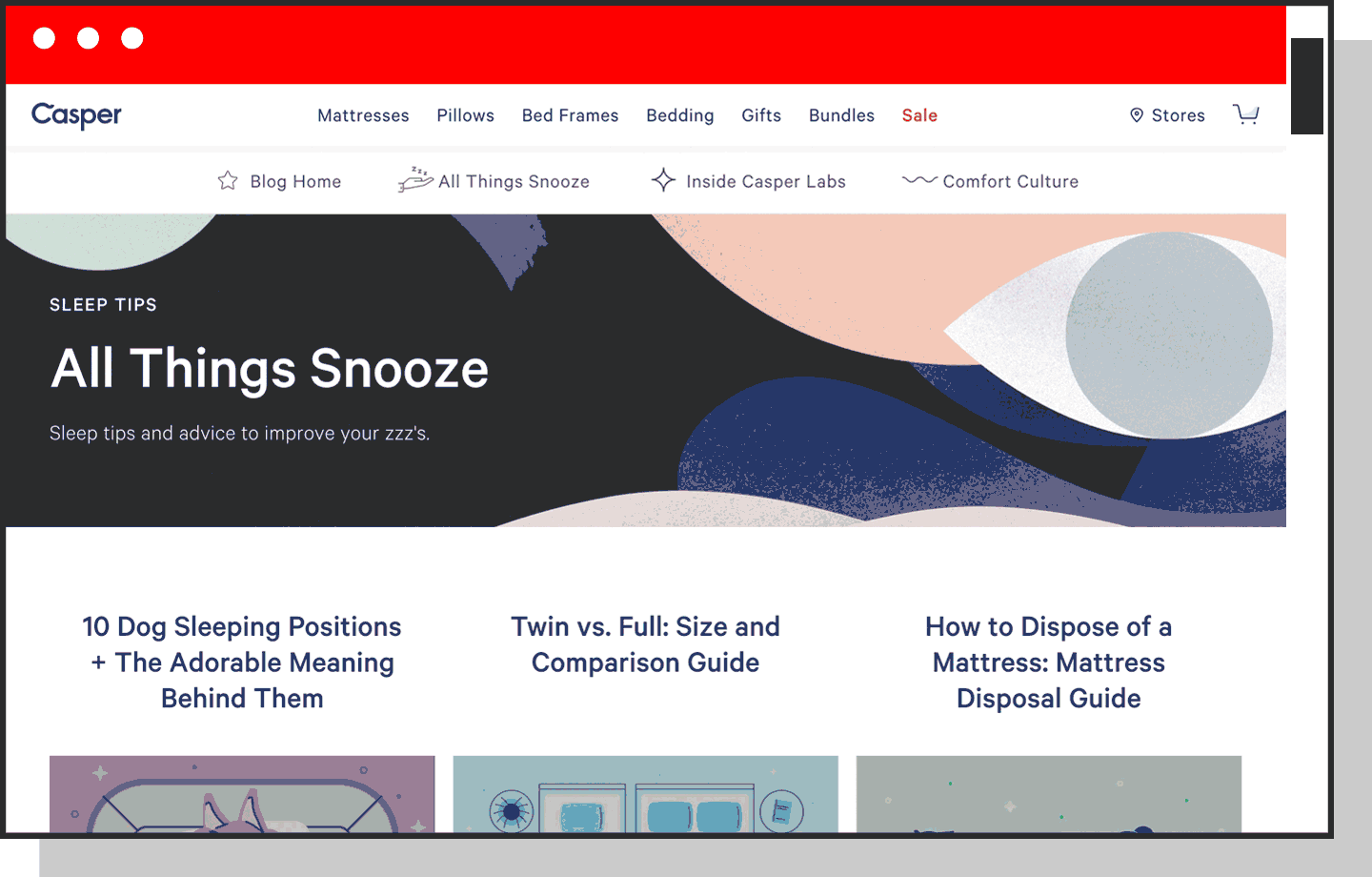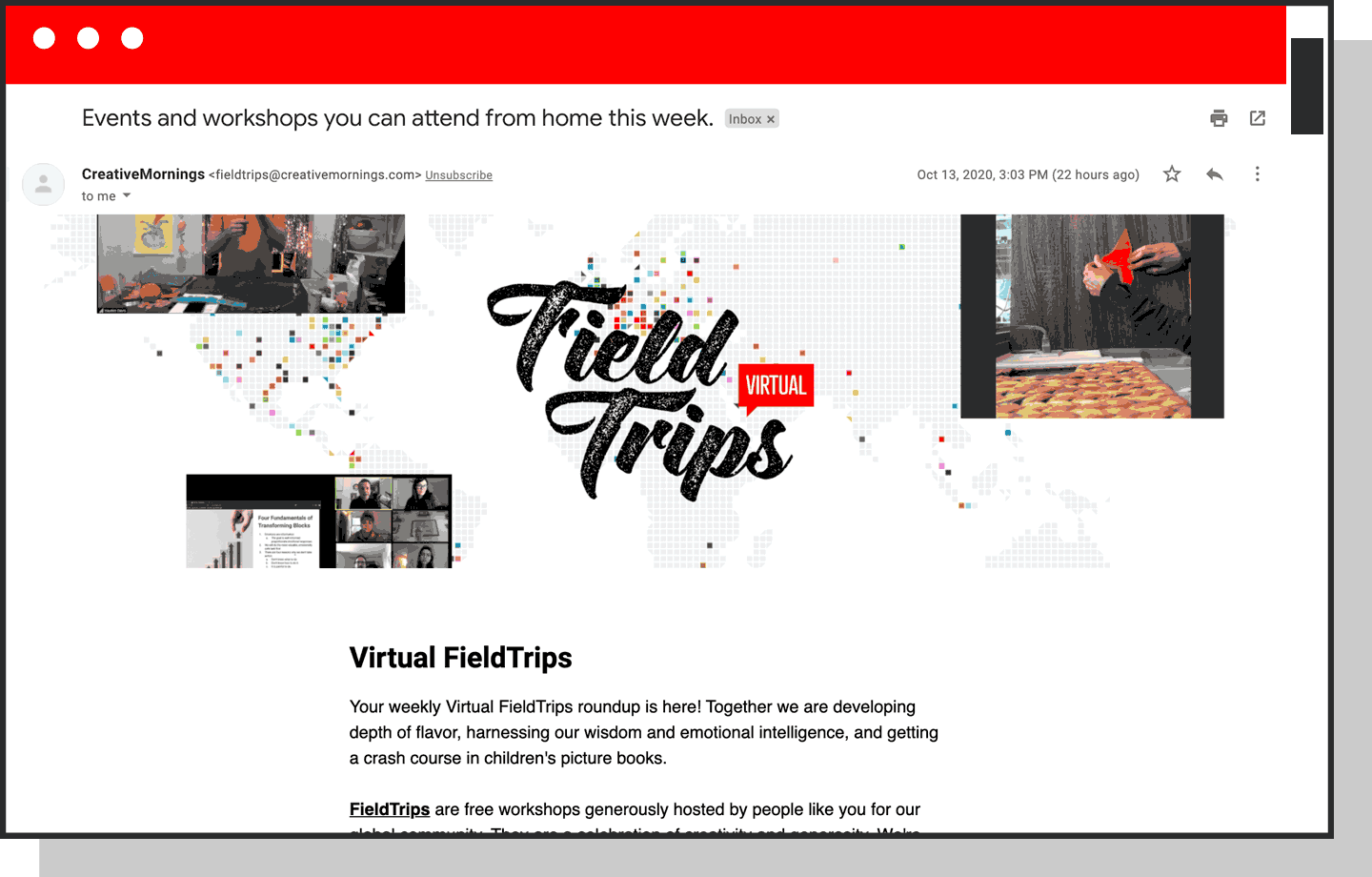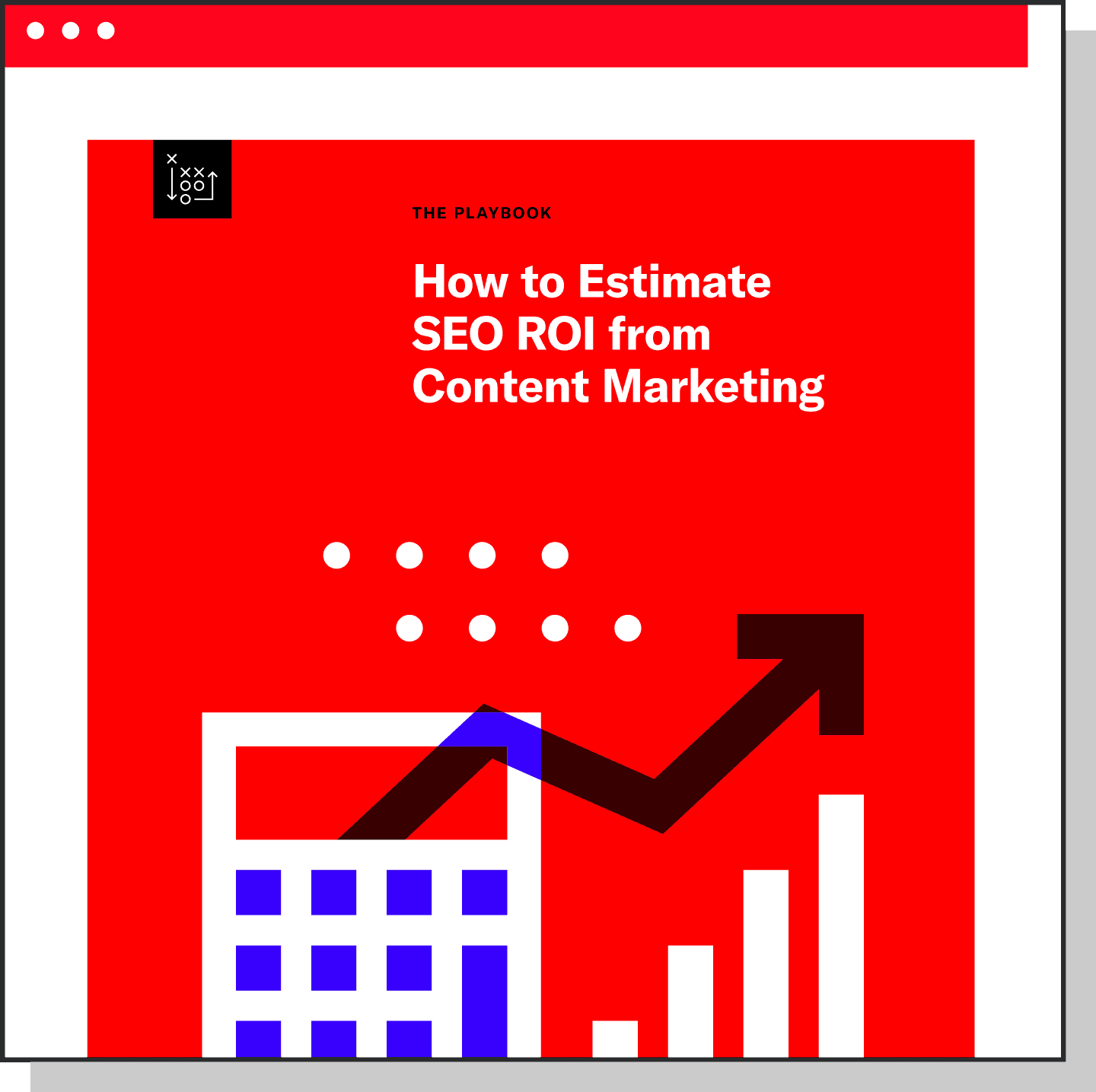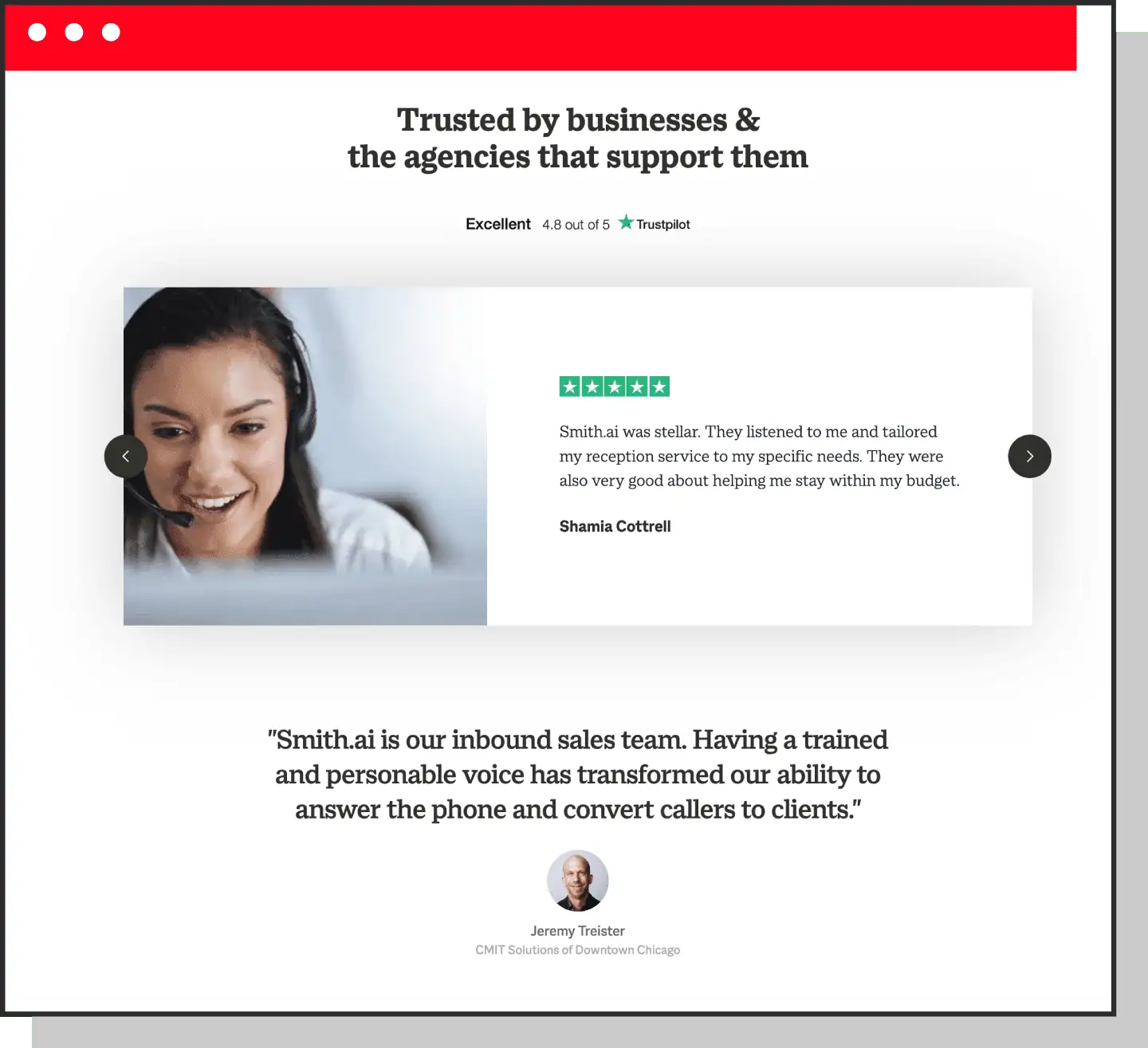So, you’re saying memes are actually a type of content marketing?
Content marketing has become one of the most powerful strategies to help grow businesses of any size.
As an SEO-focused content agency with over 10 years in the game, you might think that we only care about blogging (and it’s true, we are pretty great at this if you want to check us out here), but we can appreciate the power of a beautifully formatted eBook, killer social campaign, and even the perfect meme as much as the next person.
Content marketing comes in many shapes and sizes, and the best type for you depends on how your business works and who you’re trying to reach.
Take a look at the 18 types of content marketing below to learn which content format will best accomplish your next digital PR campaign or ultimately, your long-term business goals.
The Different Types of Content Marketing Formats
- Blogs
- Infographics
- Videos
- Podcasts
- Whitepapers
- Printables
- Interactives
- Social Posts
- Case Studies
- Email Marketing
- eBooks
- Webinars
- Online Courses
- Influencer Campaigns
- Memes and Humor
- Guides
- Surveys
- Reviews and Testimonials
1. Blogs
One of the O.G. forms of content marketing, blogs are essential for any business with an online presence.
Blogs are mainly used to help improve a website’s SEO by attracting links from other sites and optimizing to rank for additional keywords.
There aren’t many hard-and-fast rules about the best length or format of blogs, so it can be helpful to start off by using blog post templates if you’re new to writing.
Problems It Solves:
Blogs increase SERP visibility and organic traffic by optimizing posts to rank for specific keywords.
Estimated Cost:
For copy only, the cost per post can vary from $200 to $2,000+ depending on the level of depth.
Estimated Time:
For copy only, anywhere from eight to 16 hours per post depending on the complexity of the topic.
Metrics to Track:
- Monthly organic traffic using Google Analytics
- Monthly clicks using Google Search Console
- Links using Moz, Ahrefs, Semrush or another tool
- Organic keyword rankings using Moz, Ahrefs, Semrush
2. Infographics
Often featured on blogs, infographics are another of the most widely recognized forms of content marketing. Infographics are designed to add visual interest to a content topic, come in a variety of formats, and accomplish different goals.
For example, they help summarize blog posts, add clarification to a technical process, or back up claims with statistics.
In addition to adding excitement to blog posts, infographics are also an excellent way to earn links.
Because they require expert graphic design skills to create, many sites are happy to republish quality infographics for their own use and link back to the original source for credit.
Problems It Solves:
Infographics add visual interest to blog posts to increase the likelihood of both organic links and links earned through outreach.
Estimated Cost:
For infographic design only, the cost can range from $300 to $1500+ depending on the level of depth and design complexities. However, infographics are best used when combined with blog copy, so the costs would likely be combined with the estimates from #1.
Estimated Time:
For infographic design only, around 32 hours. The same point applies here as for estimated cost.
Metrics to Track:
- Monthly organic traffic using Google Analytics
- Monthly clicks using Google Search Console
- Links using Moz, Ahrefs, Semrush or another tool
- Organic keyword rankings using Moz, Ahrefs, Semrush
- Infographic shares on social media using BuzzSumo’s Content Analyzer
3. Videos
Videos are one of the most versatile types of content marketing. Whether it’s a product explainer, expert interview, event live stream, or customer testimonial, video creation is a labor-intensive but worthwhile content avenue to pursue.
It’s also one of the best mediums to connect with your audience “face to face.” Video lets viewers gain an understanding of the people and brand behind the product or service.
A vast amount of research has looked into the popularity of video marketing over the past few years, which was catalyzed by the rise of platforms like TikTok and Instagram Live.
In fact, Wyzowl found that 96% of people have watched an explainer video to learn more about a product or service, and that 87% of video marketers say video has increased traffic to their website.
Problems It Solves:
Videos boosts brand authority by enabling transparency and face time between companies and customers and helping to shed light on complicated topics.
Estimated Cost:
The cost is anywhere from $2,500 to $5,000+ for a basic explainer or how-to video depending on length.
Estimated Time:
It takes around 45 to 50 hours for planning, shooting, and editing a five-minute video.
Metrics to Track:
- Number of views
- Average watch time
- Click-through rate
- Subscriber rate (if hosting on YouTube)
4. Podcasts
Podcasts are a natural pairing with video content, as the audio from your videos can actually be repurposed into a podcast as well.
A recent study found that 62% of the U.S. population aged 12+ have listened to podcasts, and that typical weekly podcast listeners averaged eight podcasts in a week.
With a crowded market, the goal of podcasting as content marketing should be to find a unique niche and dominate it with expert insight.
Because podcast listeners are considered a “captive audience” (many listen while on their commutes to work), this content format is ideal for connecting with a smaller but engaged audience that is highly interested in the niche topic.
Podcasts are also a great way to connect with other industry experts by inviting them to join the show as guest speakers and working to cross-promote each brand.
Take a look at our list of the best content marketing podcasts on the air for more podcasting inspiration.
Problems It Solves:
Podcasts increase brand awareness and audience engagement by discussing topics that are important to that niche audience.
Estimated Cost:
For editing only, one episode will cost around $200 to $300. For full production services, this could go up to $500 to $1,000 per episode.
Estimated Time:
This varies greatly depending on the length of the podcast, but expect five to six hours for setting up, editing, uploading and marketing a one-hour podcast.
Metrics to Track:
- Downloads
- Ratings and reviews
- Any corresponding site traffic (specifically on days you release episodes)
5. Whitepapers
White papers are long-form pieces of written content that incorporate unique data or recent findings. They’re used to demonstrate a brand’s authority and in-depth knowledge in their particular space.
Typically published as PDFs with tables, graphs, and other data visualizations, white papers may be gated behind email or other lead capture forms.
Many companies also use statistics from white papers to build out press releases and generate buzz around their research. White papers can be broken up into smaller sections and repurposed as blog content.
Problems It Solves:
White papers generate publicity through press releases and increase current and prospective customers’ confidence in the brand’s subject knowledge.
Estimated Cost:
To write, design and market a white paper from scratch, you can estimate the cost at around $5,000.
Estimated Time:
To extract the data, analyze it, write the copy, and create the design work, you can estimate that this would take one person about two weeks to work on, or 80 hours.
Metrics to Track:
- Downloads
- Page visits
- Email captures (if you choose to gate your content)
6. Printables
Printables can take many forms, from checklists to templates to wine label bottles to gift card tags. Basically, anything that can be printed out, cut out, and actually used falls under this category.
Similar in purpose to infographics, printables are graphic design assets that add functional context to content topics, and that smaller blogs and publishers may not have the ability to produce on their own.
Because of this, these types of sites will often share printables from outside sources (aka you) and give a link as credit for sourcing the asset.
Problems It Solves:
Printables enable greater opportunity for both organic and earned links by providing design work that most sites can’t.
Estimated Cost:
Again, printables are typically created to go along with blogs, so be sure to estimate using the combined cost. Design creation for a set of printables can range from $500 to $2,000.
Estimated Time:
For design hours only, printable creation takes anywhere from eight to 32 hours.
Metrics to Track:
- Links using Moz, Ahrefs, Semrush or another tool
- Monthly organic traffic using Google Analytics
- Monthly clicks using Google Search Console
- Organic keyword rankings using Moz, Ahrefs, Semrush
7. Interactives
Interactives are another great way to add visual interest to a standard blog post or even to better optimize a piece of content for a competitive keyword. Interactive content includes flowcharts, calculators, and name generators, just to name a few.
Because interactives require heavy design and development work, they’re definitely a bigger time commitment than other types of content marketing.
With that being said, the payoff is worth it when you’re able to generate a high volume of links or rank for a competitive keyword because your asset outclasses others on the SERP.
Problems It Solves:
Interactives increase your ability to rank for highly searched, highly clicked terms that require more complex assets to compete.
Estimated Cost:
For the design and developer work you can estimate a cost of $3,000 to $5,500+ depending on the complexity of the asset.
Estimated Time:
Design and developer hours should be around 48 hours for a small interactive project.
Metrics to Track:
- Organic keyword rankings using Moz, Ahrefs, Semrush
- Links using Moz, Ahrefs, Semrush or another tool
- Monthly organic traffic using Google Analytics
- Monthly clicks using Google Search Console
8. Social Posts
About 94% of content marketers are using social media as a distribution channel for their content, and for good reason.
Platforms like TikTok and Instagram have enabled the rise of short-form, “snackable” content that’s easily consumed and shared online.
A single viral social post can change the game for brands seemingly overnight. One case in point is Ocean Spray, which found itself reaping the benefits of astronomical media impressions and increased sales from a short video they didn’t even create.
Want to know the best part?
Most types of content that you create translate well into social posts, too. Try reusing blog post images on Instagram or clipping longer videos and turning them into TikToks to create quick and easy social posts for your brand.
Whether it’s generating leads and clicks to your site or engaging your audience on their preferred channels, you can use social media to accomplish your brand’s content goals.
Problems It Solves:
Social posts increase content visibility and clicks to the site by providing an additional outreach channel, especially for blog, video, and data-driven content.
Estimated Cost:
- Running social on your own (excluding ad spend): Free
- Running social with a social media manager: $3,500 per month (based on the average position salary), plus ad spend and a content management platform subscription such as Hootsuite or Sprout Social
Estimated Time:
This depends on your level of involvement. Just posting recent blogs will only take a couple of hours per week, while running a sophisticated social calendar can be a full-time job of 40+ hours per week.
Metrics to Track:
- Engagement (likes, reactions, and comments)
- Total impressions and clicks to your site
9. Case Studies
Case studies are data-driven reports on how a customer or client benefitted from your product or service.
They can include statistics, graphs and other data visualizations that work to tell the narrative of how you approached a problem, came to a solution, and measured your results.
Typically, case studies are published on a specific section of a website, like a “Work” or “Case Studies” page.
They’re one of the most useful kinds of content marketing for direct lead generation because potential clients are able to clearly see the positive results you drove for a similar business and understand how you could achieve the same results for them.
Problems It Solves:
Case studies generate more leads from potential customers understanding the ROI your services can offer.
Estimated Cost:
$1,000 to $1,500 for copy and design work
Estimated Time:
If you already have the data handy, case studies should take around 16 hours for copy and design.
Metrics to Track:
- Page visits
- Time on page
- Conversions (if required to fill out a contact form)
10. Email Marketing
Similar to social media, email is a type of content marketing that’s used as a distribution channel. Email marketing can be used to share other content formats like videos, case studies, blogs, or eBooks.
Through email, you can share any piece of content you’ve created that you think will be useful to your audience and make them want to click to your site to learn more.
Email marketing works by compiling and growing a list of subscribers and regularly (but not too regularly) reaching out via email to engage and share the types of content you’ve been working on.
Your audience may not be checking up with your blog or social feed very often, but if they’re interested in the work you do, you’ll likely receive increased website traffic and signups from email marketing outreach.
Problems It Solves:
Email marketing increases traffic and engagement for specific site content.
Estimated Cost:
If you choose to run your own email campaigns, you’ll just have to pay a subscription for a service like Mailchimp or Constant Contact. Working with an agency is typically $1,000 to $2,000 per month for weekly or biweekly campaigns.
Estimated Time:
Depending on the size of your team, building one email campaign can take anywhere from a few days to a few weeks. Research by Litmus shows that the majority of email teams spend two weeks or more producing just one email.
Metrics to Track:
- Open rate
- Click-through rate
- Subscribe/unsubscribe ratio
11. eBooks
Another type of long-form content is an eBook. Whereas white papers are typically data-focused and delve into one specific problem or scenario, eBooks are longer and explain a broader topic in-depth.
For example, a career coach might create an eBook on how to nail each stage of the job interview process or a real estate agent might write an eBook on learnings from their first year as an agent.
This format is an ideal way to demonstrate your expertise in your field of work and show potential customers how you could be of service to them.
Typically, eBooks are hosted as a PDF on your website or sold on Amazon, and they can be publicized via email outreach and social media.
Problems It Solves:
eBooks create the opportunity for greater brand awareness and builds authority in your niche or industry.
Estimated Cost:
Anywhere from $3,000 to $9,000 depending on the level of writing and design time needed.
Estimated Time:
This depends on your writing style, but a good estimate for the copy is two weeks of steady work, or about 80 hours. Formatting by a designer would likely take an additional 40 hours.
Metrics to Track:
- Email captures
- eBook downloads (if hosted on your website)
- Amazon purchases
- Reviews/ratings
12. Webinars
Solo webinars are good for shorter segments explaining a specific audience question or pain point — think “how to set up a social media content calendar” or “how to use product X.”
On the other hand, ongoing webinars are often used as discussion opportunities with other industry leaders to cover wider trends or share thought leadership.
Like most content marketing formats, webinars can be repurposed. Try clipping recordings from a webinar and posting on social media or send them out to your email marketing list transcribed as blog posts.
Problems It Solves:
Webinars generate brand awareness and connection with others in the industry, along with increasing customer loyalty by addressing specific pain points.
Estimated Cost:
Costs vary greatly depending on the hosting platform you use, your hardware (computer, microphone, webcam, etc.), and how much you spend promoting your webinar across other channels. In general, $500 to $1,000 per webinar is a good estimate.
Estimated Time:
Although the length of a webinar is usually one to two hours, it can take weeks to decide on a topic and prepare all your materials (script, slide deck, etc). Give yourself at least six weeks of lead time to prepare, along with several hours the day before to practice your presentation.
Metrics to Track:
- Attendance
- Audience engagement and participation during the webinar
- Feedback after the webinar
- New leads generated from webinar attendees
13. Online Courses
Maybe you’ve never thought of online courses as content marketing, but they actually serve the same purpose as a lot of lead gen content.
Not only are online courses ideal for demonstrating and monetizing your expertise, but they also attract DIYers who may realize that they aren’t quite up to the task just yet.
For example, our SiegeLearn course is designed to teach anyone the ins and outs of content marketing, from keyword research and ideation to promotion and link generation.
As participants learn more about the importance of this field and how our process works, they may decide to engage our services instead of tackling themselves.
Problems It Solves:
Online courses supplement a slower lead gen process with additional revenue and potential leads.
Estimated Cost:
It costs anywhere from $200 to $10K+ to develop an online course depending on the equipment, software, and other expenses involved.
Estimated Time:
Online courses are one of the most time-intensive types of content you can invest in. Depending on the length of your course, it can take months to fully develop the necessary videos, design, and scripts.
Metrics to Track:
- Sign-ups/purchases
- Course completion rate
- Reviews and feedback
- Leads generated from course attendees
14. Influencer Campaigns
Depending on your industry, publicizing content with the help of an influencer can be a more valuable publishing strategy than only posting from your account.
Typically used in the lifestyle and wellness space, partnering with an influencer gets your content in front of a wider and (hopefully) more engaged audience than your current followers.
This strategy is used to generate more brand awareness and increase traffic to your site as the influencer is able to recommend your products to their followers.
Some influencers will use the content you provide them, whereas others will create their own content using your products, imagery, and copy.
Problems It Solves:
Influencer campaigns help brands with less recognition increase brand awareness, site clicks, and conversions by engaging a wider audience.
Estimated Cost:
The cost of an influencer campaign depends on the platform, number of followers and level of engagement for the account. For a single, mid-tier influencer post on Instagram, expect to pay anywhere from $500 to $5000.
Estimated Time:
You can expect it to take five to 10 hours to communicate with the influencer, send products and/or photos and decide on the terms of your agreement.
Metrics to Track:
- Post engagement (likes and comments)
- Visits to your site from the post
- Conversions for that specific product
15. Memes and Humor
Yes, it’s true, brands and companies are allowed to use memes as a form of content marketing (example above courtesy of Lemonade). Of all the content marketing types, this is the one that you should be the most careful with.
Online culture moves at the speed of light, and just one off-brand or outdated meme can alienate picky followers.
To see brands that are doing it right, check out fast-food giants on Twitter like Wendy’s and Burger King. Somehow they became the company meme champions of the past couple of years.
Today’s consumers appreciate brands that can show that they’re “hip and with it,” and memes are still a popular way to do that. Companies usually share memes on social media, but many have started incorporating them into their blogs as well.
Problems It Solves:
Memes communicate brand values and personality through content to an audience that values humor.
Estimated Cost:
Free — find meme generators with a quick Google search.
Estimated Time:
Very little, as it takes just a few seconds to generate a new meme or reshare someone else’s that you saw online.
Metrics to Track:
See metrics for blogs and social posts.
Note: It’s particularly important to pay attention to any negative feedback you may receive after posting a meme, as this could indicate that your audience doesn’t think it fits with your brand’s tone.
16. Guides
A guide is a post that shares valuable information about a specific topic all in one place. They’re usually a more long-form type of content that may be posted to your blog or accessed as a downloadable PDF.
Guides are a great way for business to position itself as a topic authority and leverage your expertise to share knowledge with your target audience.
Doing so helps readers engage with your brand and increases brand awareness on the internet.
Let’s take Siege for example — our agency is filled with experts on all things content marketing and SEO.
So naturally, we’ve created a few guides on relevant topics like this marketer’s guide to content creation or our guide to estimating SEO ROI (pictured above).
Follow our lead and start brainstorming ideas for guides that your brand has the authority to tackle. Consider what you have expertise in and build a guide around a relevant subject or problem.
Problems It Solves:
A guide positions your brand as an authority on a topic and shares knowledge to increase brand awareness and engagement with your audience.
Estimated Cost:
For copy only, the cost for a long form guide may range from $500 to $2000+ depending on the level of depth and detail.
Estimated Time:
For copy only, consider allocating a minimum of 14 to 16 hours of writing for a long-form guide.
Metrics to Track:
- Monthly organic traffic using Google Analytics
- Monthly clicks using Google Search Console
- Links using Moz, Ahrefs, Semrush or another tool
- Organic keyword rankings using Moz, Ahrefs, Semrush
- Email capture (if using a contact form)
- Downloads
17. Surveys
Surveys are a way of gathering information from a specific sample of people using questions that help you understand the population better.
By asking the right questions, you can uncover new consumer trends, reveal learnings from an industry, gauge public sentiment about a topic, or highlight disparities between groups.
Using surveys as a form of content is a unique way to communicate industry insights with your audience. Data that is novel and surprising is highly shareable in the news and often means a link back to your site.
High-end media coverage also means increased awareness for your brand. If your business becomes known for generating and sharing reputable survey content, it further establishes expertise and authority in your industry.
Just make sure that the survey content you create aligns closely with your brand. People are more likely to trust data on digital hygiene habits from a cybersecurity company over a lifestyle company that sells furniture.
Problems It Solves:
Surveys are a method of uncovering and sharing unique insights with your target audience to build expertise and authority in your industry.
Estimated Cost:
To run an online survey, the cost may be free with the most basic plans on SurveyMonkey or Typeform but can reach $1000+ per survey on platforms like YouGov.
Estimated Time:
It can take anywhere from two days to several weeks to run an online survey, and may take around 50 hours to create and design content around your survey.
Metrics to Track:
- Links using Moz, Ahrefs, Semrush or another tool
- Monthly organic traffic using Google Analytics
- Monthly clicks using Google Search Console
18. Reviews and Testimonials
Good reviews and testimonials are a cost-effective form of content that’s easy to generate and produces big benefits for your business.
Not only are they proven to increase conversions and traffic to your site, but 72% of consumers report that positive testimonials and reviews help them trust a business more.
All you have to do is ask for feedback from your customers or clients and get their permission to share it on your site. It doesn’t require much besides time, energy, and a little graphic design skills to put together a simple yet attractive review like the one shown above.
Don’t have an ounce of graphic design skills?
Prioritize SEO and format your testimonials using plain HTML so they’re more crawlable for search engines.
Better yet, use a schema markup to help a search engine like Google make sense of your testimonials and increase the chance of your information showing up on results pages.
Problems It Solves:
These provide social proof for your product or services and builds trust in your brand.
Estimated Cost:
Free
Estimated Time:
A few minutes if posting a user-generate customer review to a store like Amazon or a few hours to design and publish a customized testimonial.
Metrics to Track:
- Conversions
- Organic traffic using Google Analytics
One Content Format to Rule Them All?
Though we may be partial to a few of these content marketing formats, there’s no one format that’s better than the others.
Choosing the right types of content marketing depends on your business model and audience.
Take a diversified approach, watch other industry leaders, review more content marketing examples, and put resources into what your audience responds to best.
If you decide that you’d like to borrow some content marketing expertise from the pros, get in touch with our team to see what amazing content we can create together.




















